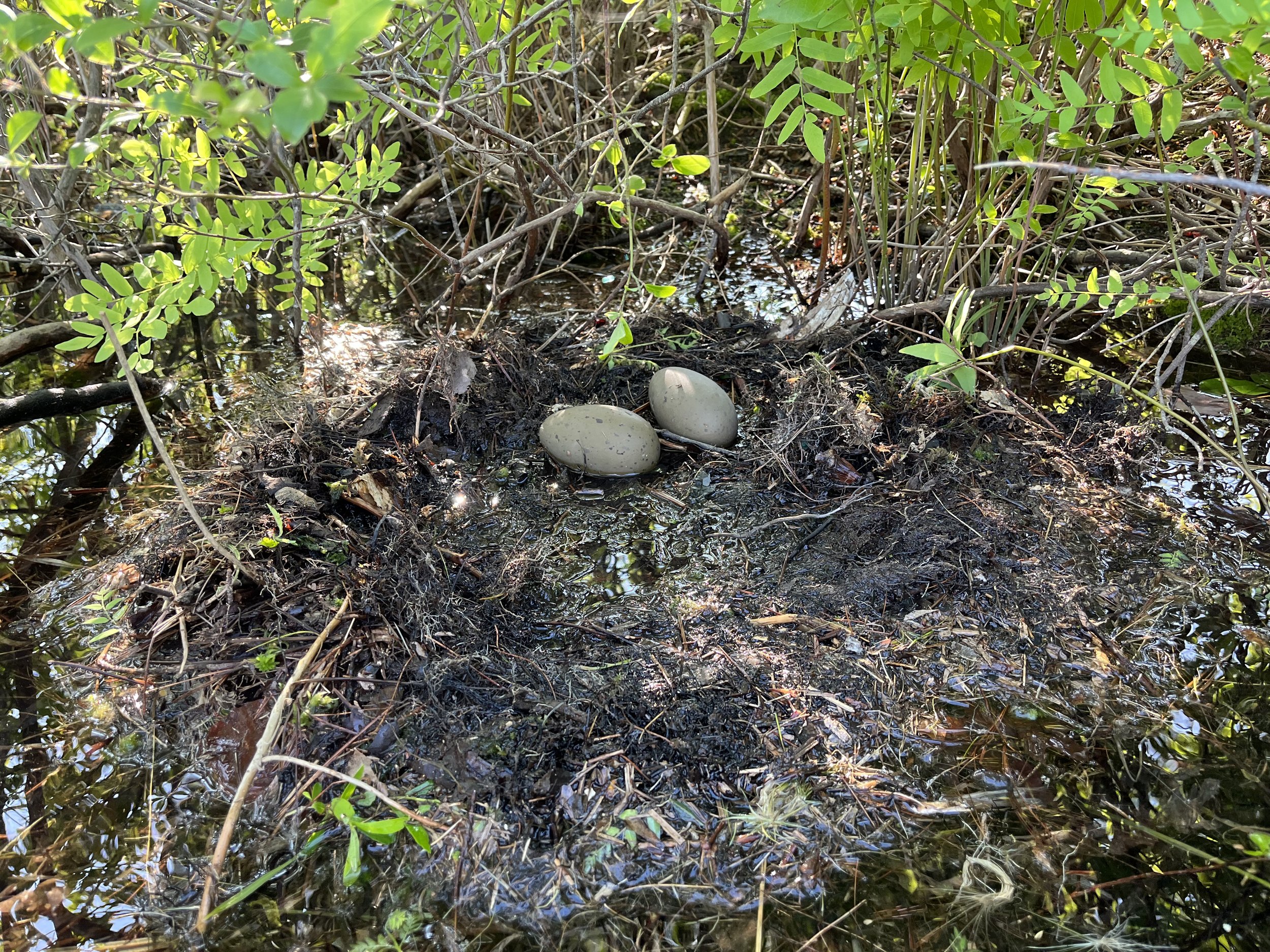As May rains poured into June, Kezar’s loons hunkered in their nests, watching and waiting as the lake level rose around them. For loons not using nesting platforms, the situation was dire. Their carefully built nests–sanctuaries that were high and dry when built– became tattered as waves and boat wakes slapped against their edges. Nest bowls, once well above water level, became saturated, threatening the health of the eggs within.
Between rainfalls, the birds scooped up mud and decaying leaves from the lake bottom, building up the height of their nests. Their forays were quick as their eggs needed the warmth of constant incubation to survive the wet conditions.
A flooded nest on Heald Pond in 2023.
Trout Pond’s loons were the watershed’s first to nest, a strategy that by late May seemed to be backfiring. With their nest just an inch above the pond’s edge, the forecast of four inches of rain in the final week before their eggs would hatch was foreboding.
Hidden from the incubating bird’s view, our loon team silently rolled nesting materials down the steep slope behind the birds’ nest. Undisturbed and uninterested, the loons ignored the materials throughout the next day. But on the second day, as rains poured down, the adults worked through the pile, pecking and packing as they raised the nest walls. Their efforts paid off when days later, two healthy chicks hatched, a playful pair that would learn to thrive in a summer of storms.
But Kezar’s loons were not so lucky. Having gotten off to a later start, the unceasing rains proved to be more than any nest-bolstering could handle. One by one, Kezar’s land nests were abandoned as drenched eggs grew cold. On Heald Pond as well, the waters rose too high for the birds to hang on.
Attempts were also made to help reconstruct the Heald Pond nest.
So was the year a total wipe out? With just one chick surviving on Kezar, at times it felt that way. But in seasons like this one, nesting rafts can provide an important haven because they rise and fall with the water level, keeping the nests dry despite flooding conditions. Yet while multiple chicks did hatch on Kezar’s nesting rafts, all but one were lost to eagles and intruding loons.
As in past years, the watershed’s total chick count was boosted by the high survival rate of the chicks on our ponds. A pair of chicks hatched on Horseshoe’s raft and a singleton from Cushman Pond’s raft all thrived. Combined with Trout’s pair and Kezar’s Lower Bay chick, the watershed’s fledging chick count was six: a fortunate outcome for a very wet year.
Although average chick numbers of eight or more per season keep our loon population in the sustainable range, year to year fluctuation is expected. With a little help from nesting rafts, the devastation of 2023 was not as bad as it might have been, yet the weakness of one season puts pressure on years that follow.
Article and photos contributed by Laura Robinson




